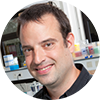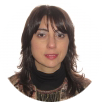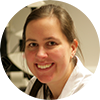
Assays and technologies for circulating cell-free DNA analysis continue to improve and advance, but there is still much to do before these can be used for routine clinical use. Cambridge Healthtech Institute’s Fourth Annual Enabling Technologies for Cell-Free DNA conference will examine the latest advances in cfDNA technologies and the path towards clinical use. This year’s program will focus on pre-analytical challenges, from sample prep to detection, extraction, and isolation. We will also examine other types of circulating material, such as RNA, as well as methylation. Working with different sample types will also be addressed.
Final Agenda
Day 1 | Day 2 | Download Brochure | Speaker Bios
Recommended Short Course*
SC3: Liquid Biopsy for P4 Medicine: Predictive, Preventive, Personalized and Participatory [View Detailed Agenda]
Lorena Diéguez, PhD, Staff Researcher, Diagnostic Tools and Methods Research Group, Life Sciences, International Iberian Nanotechnology Laboratory, Portugal
Clotilde Costa Nogueira, PhD, Head, Liquid Biopsy Line, Roche-Chus Joint Unit, University Hospital of Santiago de Compostela, Spain
P4 Medicine is Predictive, Preventive, Personalized and Participatory. The P4 medicine concept is fully realised in the context of Liquid Biopsy, since the patient’s blood is used as a biomarker for the prognosis and diagnosis of the disease status. Therefore, Liquid Biopsy provides the ideal scheme to personalize the treatment in precision medicine. P4 medicine will permit to identify predictive and preventive biomarkers and genomic mapping, adapting treatments to each patient, and having the patients engaged for a successful outcome.
*Separate Registration required.
WEDNESDAY, 23 MAY
11:35 Plenary Introduction
 John Carrano, CEO, Paratus Diagnostics, LLC, United States
John Carrano, CEO, Paratus Diagnostics, LLC, United States
11:45-12:15 The New EU IVD Regulation – What Will It Mean for Your Lab?
 David E. Barton, PhD, Chief Molecular Geneticist, National Centre for Medical Genetics, Our Lady’s Hospital for Sick Children, Ireland
David E. Barton, PhD, Chief Molecular Geneticist, National Centre for Medical Genetics, Our Lady’s Hospital for Sick Children, Ireland
In May 2017, Europe passed a new Regulation on in vitro Diagnostic Devices (IVDs). The regulation sets up a framework for controlling the market for diagnostic tests within the EU, setting out standards for the design and manufacture of in-vitro diagnostic devices (IVDs) and providing mechanisms for the oversight of these standards. This presentation will outline the content of the new regulations, with a particular focus on molecular diagnostics, and highlight the new requirements for clinical laboratories.
12:15-12:25 Introduction: Medicinal Product Regulators Point of View: Scientific-Regulatory Aspects of Companion Diagnostics and Challenges for Validation during Clinical Co-Development (Quality-Related Aspects)
 Jörg Engelbergs, PhD, Scientific Expert and Assessor Biomedicines (Quality, Non-Clinic & Personalized Medicine), Section Mono- and Polyclonal Antibodies, Paul-Ehrlich-Institut, Federal Institute for Vaccines and Biomedicines, Germany
Jörg Engelbergs, PhD, Scientific Expert and Assessor Biomedicines (Quality, Non-Clinic & Personalized Medicine), Section Mono- and Polyclonal Antibodies, Paul-Ehrlich-Institut, Federal Institute for Vaccines and Biomedicines, Germany
In Europe, the legislation for marketing of medicinal products (MP) and IVDs including predictive biomarker-based assays (Companion Diagnostics, CDx) are not directly linked which is challenging for co-development. The new IVDD involves MP regulators in the CDx review process for CE marking. This presentation will outline from the perspective of MP regulators the scientific-regulatory challenges for technical validation of CDx. Differences between exploratory assays and assays used for patient stratification, as well as aspects for complex assays will be addressed.
12:25-13:30 PANEL DISCUSSION: Changing Landscape for IVDs in the EU
Moderator:
 Charlotte Ryckman, Covington & Burling LLP, Belgium
Charlotte Ryckman, Covington & Burling LLP, Belgium
Panelists:
 David E. Barton, PhD, Chief Molecular Geneticist, National Centre for Medical Genetics, Our Lady’s Hospital for Sick Children, Ireland
David E. Barton, PhD, Chief Molecular Geneticist, National Centre for Medical Genetics, Our Lady’s Hospital for Sick Children, Ireland
 Jörg Engelbergs, PhD, Section Mono- and Polyclonal Antibodies, Scientific Expert Biomedicines, Quality, Non-Clinic & Personalized Medicine (Biomarker/CDx), Paul-Ehrlich-Institut, Federal Institute for Vaccines and Biomedicines, Germany
Jörg Engelbergs, PhD, Section Mono- and Polyclonal Antibodies, Scientific Expert Biomedicines, Quality, Non-Clinic & Personalized Medicine (Biomarker/CDx), Paul-Ehrlich-Institut, Federal Institute for Vaccines and Biomedicines, Germany
 Maria Judite Neves, Health Products Director, Health Products Directorate, INFARMED – National Authority of Medicines and Health Products, Portugal
Maria Judite Neves, Health Products Director, Health Products Directorate, INFARMED – National Authority of Medicines and Health Products, Portugal
 Sue Spencer, Global Service Director, Regulatory, UL, United Kingdom
Sue Spencer, Global Service Director, Regulatory, UL, United Kingdom
 Andreas F. Stange, PhD, Vice President, MHS Global IVD, TÜV SÜD, Germany
Andreas F. Stange, PhD, Vice President, MHS Global IVD, TÜV SÜD, Germany
 Doris-Ann Williams, MBE, Chief Executive, British In Vitro Diagnostics Association (BIVDA), United Kingdom
Doris-Ann Williams, MBE, Chief Executive, British In Vitro Diagnostics Association (BIVDA), United Kingdom
- Practical impact of the new IVD Regulation
- Regulatory aspects of companion diagnostics
- Challenges for validation
- Role of IVDs in the market
14:30 Chairperson’s Remarks
Christa Noehammer, PhD, Senior Scientist, Molecular Diagnostics, Austrian Institute of Technology GmbH, Austria
14:35 KEYNOTE PRESENTATION: Multi-Step Real-Time PCR Coupled with HRM Enables Rapid Mutation and MSI Assessment Prior to Targeted Re-Sequencing
 G. Mike Makrigiorgos, PhD, Professor, Radiation Oncology, Dana Farber and Harvard Medical School, United States
G. Mike Makrigiorgos, PhD, Professor, Radiation Oncology, Dana Farber and Harvard Medical School, United States
Targeted re-sequencing often entails discrete amplification and ligation steps during sample preparation that increase both cost and time to results. We provide novel forms of real time PCR that reduce the effort for sample preparation while also providing rapid assessment of mutation status prior to targeted re-sequencing. The new method incorporates implementation of mutation enrichment via COLD-PCR or NaME-PrO together with high resolution melting. Application in detecting mutations and microsatellite instability (MSI) using circulating DNA from clinical cancer samples will be presented.
15:05 Identification of Rare Mutations and DNA Methylation Patterns in Cell-Free DNA Using Multiplexed Enhanced-ice-COLD-PCR
 Jorg Tost, PhD, Director, Laboratory for Epigenetics & Environment, Centre National de Genotypage, CEA – Institut de Génomique, France
Jorg Tost, PhD, Director, Laboratory for Epigenetics & Environment, Centre National de Genotypage, CEA – Institut de Génomique, France
We have developed a modified version of the ice-COLD-PCR assay called Enhanced-ice-COLD-PCR for KRAS, BRAF and NRAS mutation detection and identification, which allows the enrichment of the most frequent mutations and requires only a small amount of starting material (frozen, FFPE or plasma) permitting the sensitive detection and multiplexed sequence identification of mutations within three hours. We have recently extended the applications to the analysis of methylated molecules in primary tumors and ccfDNA. Enhanced-ice-COLD-PCR has been applied to different collections of cancer samples.
15:35 Use of Digital PCR and Optimized NGS for Cell-Free Tumour DNA Analysis
 Valerie Taly, PhD, Group Leader, CNRS Researcher, UMR S1147, University of Paris Descartes, CNRS, France
Valerie Taly, PhD, Group Leader, CNRS Researcher, UMR S1147, University of Paris Descartes, CNRS, France
We will present several strategies based on digital PCR and/or optimized NGS that permit highly sensitive and precise detection of circulating tumor DNA for the follow up of cancer patients. Interests and potential complementarity of these technologies will be presented through different examples.
16:05 Refreshment Break in the Exhibit Hall with Poster Viewing
17:05 Building a Liquid Biopsy Platform for Cancers with a Low Burden in Plasma
 Milana Frenkel-Morgenstern, PhD, Senior Lecturer, Faculty of Medicine in Galilee, Bar-Ilan University, Israel
Milana Frenkel-Morgenstern, PhD, Senior Lecturer, Faculty of Medicine in Galilee, Bar-Ilan University, Israel
Non-invasive diagnostics of highly mutated cancers will advance the cancer monitoring and prognosis. We aim to build a novel liquid biopsy platform for the cases with a low burden in plasma using a sensitive whole genome, whole methylome and epigenetics analyses. Our methodology enables the discovery of unique biomarkers at a single molecule level for personalized therapy approaches.
17:35 Pre-Analytical Standardization for Isolation of Extracellular Vesicles
 An Hendrix, PhD, Professor, Laboratory of Experimental Cancer Research, Ghent University, Belgium
An Hendrix, PhD, Professor, Laboratory of Experimental Cancer Research, Ghent University, Belgium
An Hendrix will discuss the impact of pre-analytical factors and isolation methods on the identification of extracellular vesicle-associated biomarkers in liquid biopsies. She will present the development and implementation of reference materials for extracellular vesicles and how this can help to compare and normalize results.
18:05 Breakout Discussions
Standardisation Challenges in cfDNA Analysis
Alison Devonshire, PhD, Science Leader, Molecular and Cell Biology, LGC Ltd., United Kingdom
- What are the best approaches for controlling for cfDNA isolation and quantifying total cfDNA?
- How can QC and reference materials help to compare and standardise results from different liquid biopsy tests?
- What are the challenges of single vs multi-gene based diagnostics in terms of regulatory approval and clinical translation?
Circulating DNA vs. RNA: Technological Challenges
Jo Vandesompele, PhD, Professor, Functional Cancer Genomics and Applied Bioinformatics, Ghent University, Belgium
- What are the challenges associated with analysis of cfDNA vs. RNA?
- What pre-analytical steps need to be taken to ensure proper analysis of particular circulating biomarkers?
- What are the next circulating biomarkers the field will examine, and what challenges do you foresee?
19:05 Close of Day
Day 1 | Day 2 | Download Brochure | Speaker Bios
THURSDAY, 24 May
08:30 Registration and Morning Coffee
09:00 Chairperson’s Remarks
Rikke Fredslund Andersen, PhD, Molecular Biologist, Department of Clinical Biochemistry, Vejle Hospital, Denmark
09:05 Pan-Cancer Characterization and Exploitation of Plasma DNA Fragmentation with Genome-Wide Sequencing
Florent Mouliere, PhD, Postdoctoral Research Associate, Cancer Research UK Cambridge Institute, University of Cambridge, United Kingdom
The sensitivity for detecting the presence of genomic changes in circulating tumour DNA (ctDNA) is limited by its low concentration in plasma. Here I will present new approaches tailoring sequencing to the biological properties of ctDNA. Notably, we studied the feasibility for enrichment of ctDNA by physical and in silico size selection in plasma samples collected in 51 patients from multiple cancer types. Size selection of DNA fragments between 90-150 bp yielded enrichment up to 118-fold, unlocking untargeted genome-wide sequencing for liquid biopsy.
09:35 Isolation and Quantification of Cell-Free DNA in Cerebrospinal Fluid
 Alison Devonshire, PhD, Science Leader, Molecular and Cell Biology, LGC Ltd., United Kingdom
Alison Devonshire, PhD, Science Leader, Molecular and Cell Biology, LGC Ltd., United Kingdom
Cerebrospinal fluid (CSF) is a medium containing biomarkers of traumatic injuries, neurodegenerative disorders and brain malignancies. Cell-free DNA (cfDNA) is another potential CSF biomarker for such pathologies, yet standardized isolation and quantification methods remain to be defined. We evaluate methods for cfDNA extraction from CSF and quantify nuclear and mitochondrial genomic targets in cases of Alzheimer’s disease, primary or secondary brain cancer and controls.
10:05 Enabling Confidence in Liquid Biopsy Testing using Patient-Like Reference Materials
 Sandi Deans, PhD, Director, Genomics Quality Assessment (GenQA), Department of Laboratory Medicine, Royal Infirmary of Edinburgh
Sandi Deans, PhD, Director, Genomics Quality Assessment (GenQA), Department of Laboratory Medicine, Royal Infirmary of Edinburgh
The testing of ctDNA (liquid biopsy) is rapidly being implemented into clinical practice as a surrogate for solid tumor biopsies. This presentation will discuss the use of patient-like reference materials to drive accurate patient testing and subsequent drug treatment decisions based on the presence of pathogenic EGFR gene variants.
10:20 The PlexBio Molecular Diagnostic System in the Characterization and Management of Oncogene-Addicted NSCLC Patients
Nicla Borrelli, PhD, Researcher, Pathology, University "G. D'Annunzio", Chieti, Italy
10:35 Coffee Break in the Exhibit Hall. Last Chance for Poster Viewing
11:20 Preanalytical Blood Sample Workup for Cell-Free DNA Analysis Using Droplet Digital PCR for Molecular Diagnostics
 Manon M. H. Huibers, PhD, Clinical Scientist in Molecular Pathology, Pathology, University Medical Center Utrecht, The Netherlands
Manon M. H. Huibers, PhD, Clinical Scientist in Molecular Pathology, Pathology, University Medical Center Utrecht, The Netherlands
Pitfalls in pre-analytical steps for liquid biopsy material handling will be presented including different methods and protocols for sample collection, storage, centrifugation, isolation, and quantification of cfDNA. Examples will be given using liquid biopsy sample input from blood, cerebrospinal fluid, urine, and eye fluid. All these liquid biopsy samples could be used in different diagnostic fields, which will be addressed in this presentation.
11:50 Results of an External Quality Assessment Scheme (EQA) for Isolation and Analysis of Circulating Tumour DNA (ctDNA)
 Verena Haselmann, MD, Physician, Institute for Clinical Chemistry, University Medicine Mannheim, Germany
Verena Haselmann, MD, Physician, Institute for Clinical Chemistry, University Medicine Mannheim, Germany
In these pilot EQA schemes for analysis of ctDNA, 42 European laboratories participated and reported the methods used for isolation and quantification of cfDNA as well as for genotyping of ctDNA. The results obtained illustrate the current variability in multiple phases of cfDNA processing and analysis of ctDNA, resulting in an overall error rate of 6.09%. Therefore, there is an urgent need for harmonization of procedures in this new diagnostic field.
12:50 Enjoy Lunch on Your Own
13:50 Chairperson’s Remarks
Verena Haselmann, MD, Physician, Institute for Clinical Chemistry, University Medicine Mannheim, Germany
14:00 RNA vs. DNA: Pre-Analytical Steps
 Jo Vandesompele, PhD, Professor, Functional Cancer Genomics and Applied Bioinformatics, Ghent University, Belgium
Jo Vandesompele, PhD, Professor, Functional Cancer Genomics and Applied Bioinformatics, Ghent University, Belgium
We are examining the effects of blood collection tubes, extraction kits, and time and how they influence the transcriptome of RNA. The goal of this study is to create standardisation and reproducibility.
14:30 Circulating Biomarkers and Exosomes in Salivary Diagnostics
 Christa Noehammer, PhD, Senior Scientist, Molecular Diagnostics, Austrian Institute of Technology GmbH, Austria
Christa Noehammer, PhD, Senior Scientist, Molecular Diagnostics, Austrian Institute of Technology GmbH, Austria
Our current focus is to investigate saliva for its suitability for any type of circulating biomarker diagnostics. Along these lines we will present proof of concept data for salivary DNA-methylation - and autoantibody-based biomarkers in a breast cancer patient cohort.
15:00 Methodological Aspects of Analyses of Mutated vs. Methylated Circulating Cell-Free DNA
 Rikke Fredslund Andersen, PhD, Molecular Biologist, Department of Clinical Biochemistry, Vejle Hospital, Denmark
Rikke Fredslund Andersen, PhD, Molecular Biologist, Department of Clinical Biochemistry, Vejle Hospital, Denmark
Tumor-specific methylations in circulating cell-free DNA have potential to become clinically applicable markers to monitor cancer patients. A few markers can potentially substitute mutational analyses where large numbers of markers are needed to cover all patients. Methodological aspects of these analyses will be discussed as well as comparisons with mutation analyses in plasma.
15:30 SELECTED POSTER PRESENTATION: Simple, Multiplexed, PCR-Based Barcoding of DNA for Sensitive Mutation Detection Using Sequencing
Stefan Filges, Department of Pathology, Sahlgrenska Cancer Center, Institute of Biomedicine, Sahlgrenska Academy at University of Gothenburg
16:00 Refreshment Break in the Foyer
16:20 Identification of Tissue-Specific Cell Death Using Methylation Patterns of Circulating DNA
 Ruth Shemer, PhD, Senior Lecturer, Department of Developmental Biology and Cancer Research, Hebrew University, Israel
Ruth Shemer, PhD, Senior Lecturer, Department of Developmental Biology and Cancer Research, Hebrew University, Israel
Cell-free circulating DNA (cfDNA) is emerging as a powerful biomarker, however its utility is limited to cases where the tissue of interest differs genetically from the host. Here we present an approach to identify the tissue origins of cfDNA, based on tissue/cell-specific methylation pattern. We used this approach to determine the source-tissue distribution in a serum sample of patients with various diseases including cancer.
16:50 Peripheral Monitoring of Neurodegeneration Using cfDNA Methylation
 Zac Chatterton, PhD, Lecturer, Brain and Mind Centre, The University of Sydney, Australia
Zac Chatterton, PhD, Lecturer, Brain and Mind Centre, The University of Sydney, Australia
Neurodegeneration occurs in a variety of human diseases however molecular profiling of the brain is restrictive. Cell-free DNA (cfDNA) derived from neurological tissue holds great potential for neurodegenerative detection and monitoring. Within our lab we exploit the unique DNA methylation profiles of brain cells to create molecular diagnostic assays capable of detecting peripheral neurological cell free DNA.
17:20 Close of Conference
Day 1 | Day 2 | Download Brochure | Speaker Bios